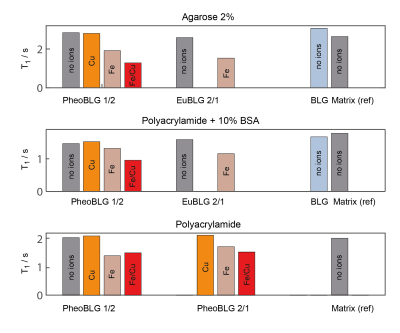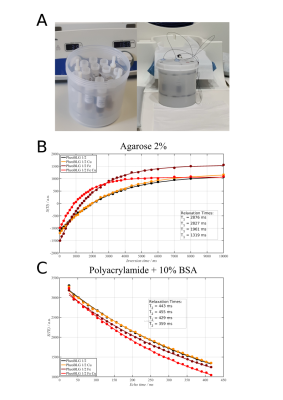Niklas Wallstein1, André Pampel 1, Andrea Capucciati2, Carsten Jäger1, Fabio A. Zucca3, Luigi Casella2, Luigi Zecca3, and Harald E. Möller1
1Max Planck Institute for Human Cognitive and Brain Sciences, Leipzig, Germany, 2Department of Chemistry, University of Pavia, Pavia, Italy, 3Institute of Biomedical Technologies, National Research Council of Italy, Segrate, Milan, Italy
1Max Planck Institute for Human Cognitive and Brain Sciences, Leipzig, Germany, 2Department of Chemistry, University of Pavia, Pavia, Italy, 3Institute of Biomedical Technologies, National Research Council of Italy, Segrate, Milan, Italy
T1 reduction associated with melanin-iron complexes presumably dominates contrast in Neuromelanin-MRI. We investigated the effect of copper/iron loading on relaxation in model systems and observed pronounced T1 shortening if both metals are simultaneously present.

Figure 2: Overview of determined T1-relaxation times for different underlying background matrices, for various NM models with and without metal ions. Values are calculated as the mean over T1 times inside a circular ROI (~80 voxels) of a plane through the tubes. Standard deviations in the order of approximately 50ms for the longest relaxation times.

